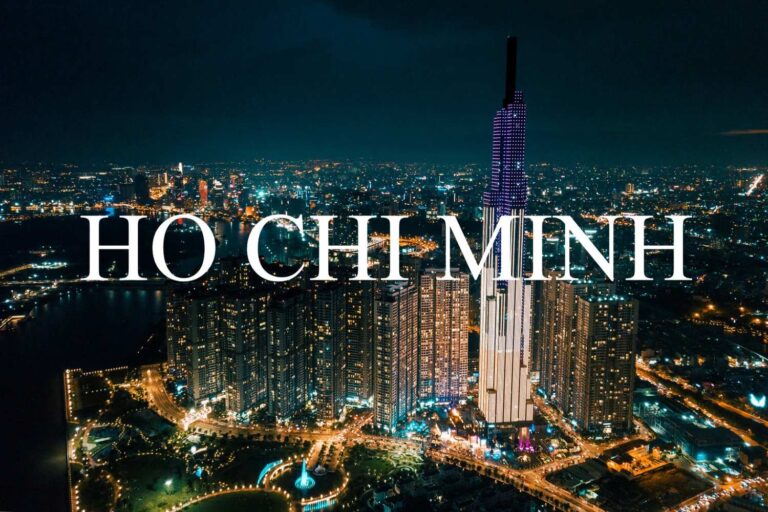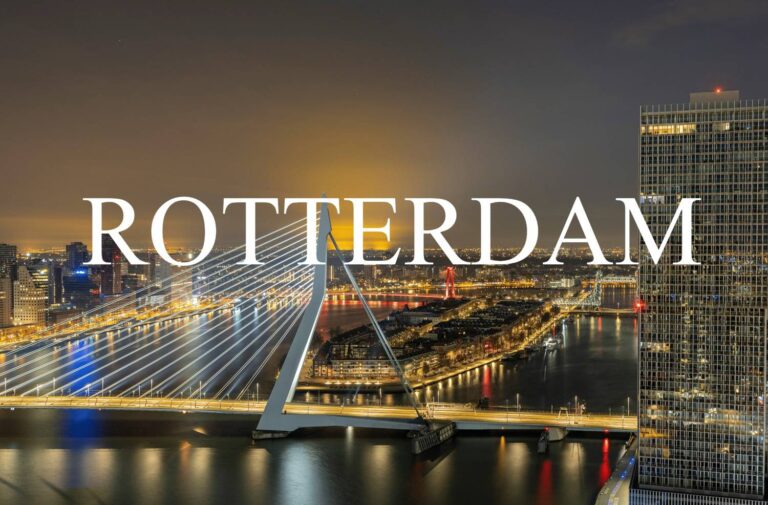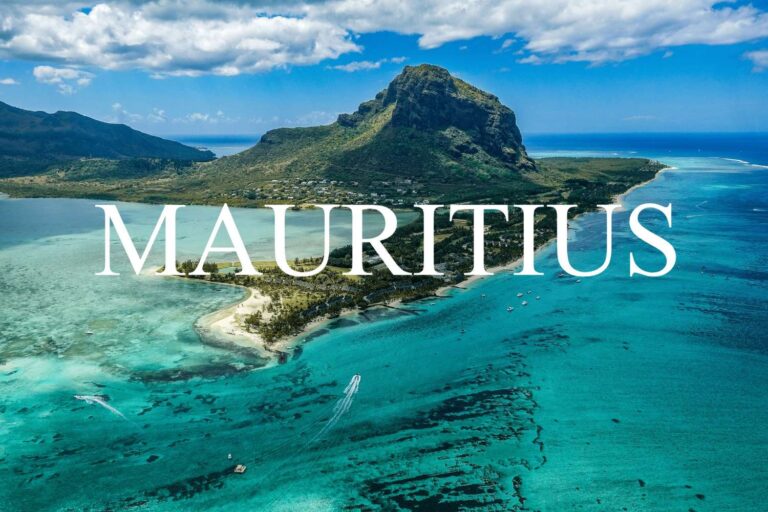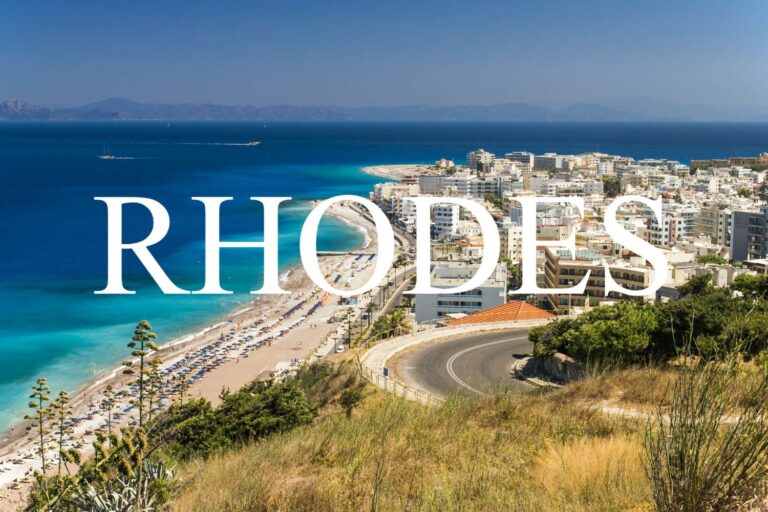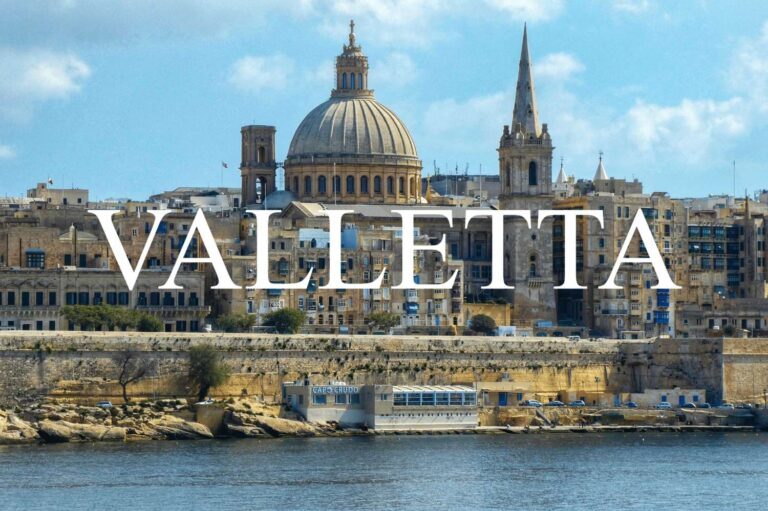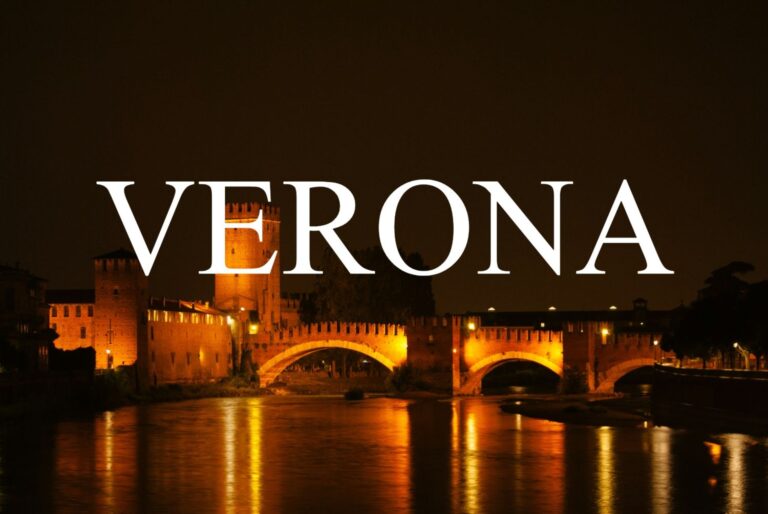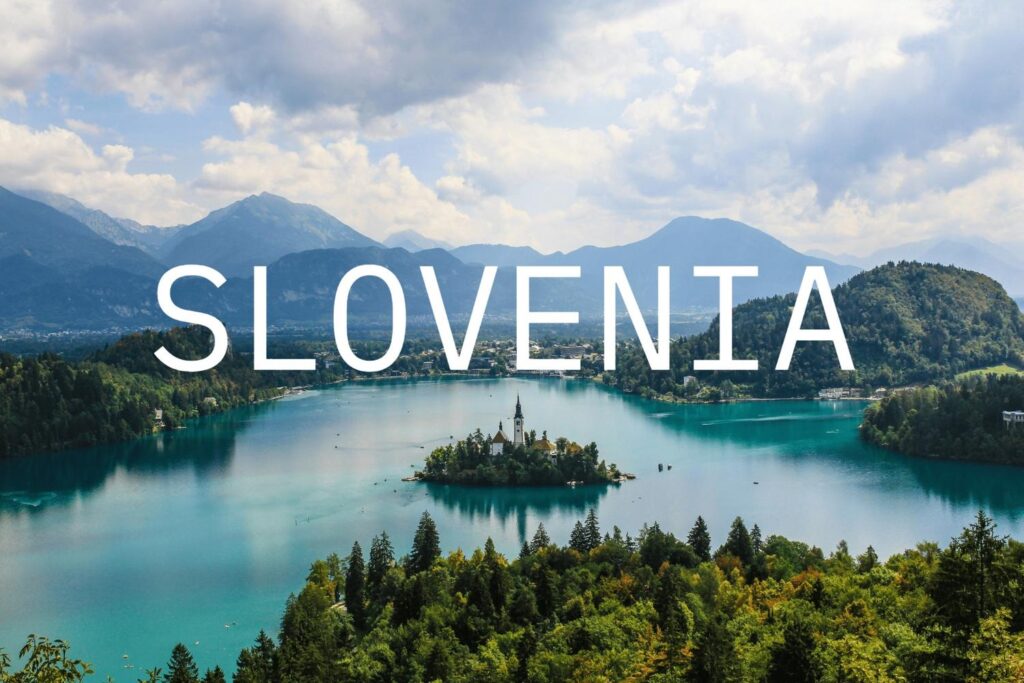
Located at the crossroads of Italy, Austria, and Croatia, Slovenia is a stunning European gem that often flies under the radar but offers an unforgettable blend of natural beauty and cultural richness. Renowned for its dramatic alpine peaks, crystal-clear lakes that look straight out of a fairytale, rolling vineyards, and charming, vibrant cities, Slovenia captivates travelers seeking both relaxation and adventure.
Slovenia’s commitment to sustainability shines through its eco-friendly tourism initiatives and pristine natural parks, making it a perfect destination for environmentally conscious travelers. Whether you’re hiking through the breathtaking Triglav National Park, exploring the enchanting caves of Postojna, or savoring world-class wines in the sun-kissed wine regions, every corner of Slovenia tells a story of harmony between nature and culture.
The warmth and hospitality of the Slovenian people add a special touch to your visit, making you feel right at home as you wander through picturesque towns like Ljubljana, Maribor, and Bled. From lively markets and historic castles to outdoor adventures like kayaking and skiing, Slovenia offers a diverse range of experiences that suit every traveler’s pace and passion.
Whether you’re seeking serene landscapes, cultural treasures, or thrilling outdoor activities, Slovenia promises a genuine and enriching travel experience that stays with you long after you leave.
🗓️ Best Time to Visit Slovenia
🌷 April to June & September to October (Spring & Early Fall)
These are the ideal seasons to visit Slovenia, with pleasant weather, fewer crowds, and nature at its finest — perfect for hiking, sightseeing, and enjoying local cuisine outdoors.
☀️ July to August (Summer)
Expect warmer temperatures and busier tourist spots, especially around Lake Bled and the Slovenian Coast. It’s a great time for swimming, festivals, and outdoor adventures.
❄️ December to March (Winter)
Slovenia becomes a winter wonderland, especially in the Julian Alps. Popular for skiing, Christmas markets, and cozy alpine villages.
💶 Currency & Travel Essentials
- Currency: Euro (€)
- Language: Slovene (English is widely spoken)
- Transportation: Efficient public transport, car rentals for rural exploration, and well-maintained roads
- Average Daily Budget:
- Budget: €50–80
- Mid-range: €90–150
- Luxury: €180+
🏞️ 10 Best Places to Visit in Slovenia
Lake Bled
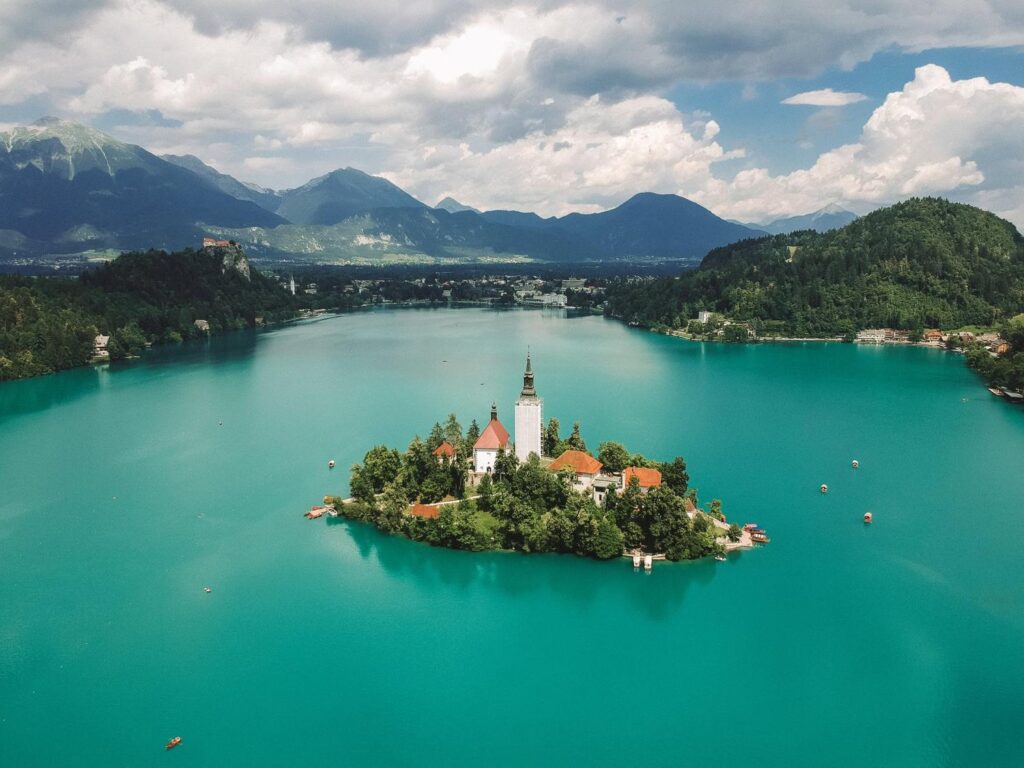
Nestled in the heart of the Julian Alps, Lake Bled is a destination straight out of a storybook. With its emerald-green waters, charming island church, medieval clifftop castle, and panoramic mountain backdrop, this enchanting lake is one of Slovenia’s most beloved travel gems. Whether you’re after serene landscapes, outdoor adventures, or a taste of local tradition, Lake Bled offers a magical experience that lingers long after you leave.
🌟 Highlights of Lake Bled
🏰 Bled Castle (Blejski Grad)
Perched on a cliff 130 meters above the lake, Bled Castle is the oldest in Slovenia and boasts sweeping views of the water and surrounding peaks. Inside, explore a fascinating museum, a historic printing press, and even a wine cellar where you can bottle your own wine.
🛶 Bled Island & Church of the Assumption
In the center of the lake lies Bled Island, home to a picturesque baroque church. The traditional way to reach it? A ride on a pletna, a hand-rowed wooden boat unique to Lake Bled. Once on the island, ring the church bell—legend says your wish will come true.
🍰 Bled Cream Cake (Kremšnita)
No trip to Lake Bled is complete without trying the famous Bled cream cake—a delicious, fluffy pastry layered with custard and whipped cream. The Park Café by the lake is a popular spot to savor this local treat with a view.
🚶♂️ Scenic Walks and Bike Rides
The 6 km path around the lake is perfect for a leisurely walk or bike ride. Every turn reveals a new postcard-worthy angle—especially at sunrise or sunset.
🏄♂️ Outdoor Activities
- Rowboat or SUP Rental: Paddle to the island at your own pace.
- Swimming: The lake is swimmable and very popular in summer.
- Hiking: Trails like Ojstrica and Mala Osojnica offer panoramic views.
- Winter Fun: In colder months, enjoy ice skating or cozy lakeside strolls in the snow.
📍 How to Get to Lake Bled
- From Ljubljana: About 1 hour by car or direct bus. Trains also run to Lesce-Bled station with local bus connections.
- From Lake Bohinj: A scenic 30-minute drive through Triglav National Park.
- By Plane: The nearest airport is Ljubljana Jože Pučnik Airport (LJU).
🕒 Visitor Information
- Best Time to Visit:
- Spring to early autumn (May–October) offers the best weather for outdoor activities.
- Winter brings peaceful vibes, fewer tourists, and a magical snowy landscape.
- Recommended Visit Duration:
- A full day is ideal, but staying overnight allows for early morning tranquility and sunset views.
💡 Travel Tips
- 📸 Go early or stay late to avoid peak crowds and catch the golden hour light.
- 🥾 Wear comfy shoes—some of the best views require a short hike.
- 🧘♀️ Unplug and relax—Lake Bled is a place to slow down and soak in nature.
- 🎒 Pack a picnic or enjoy a lakeside meal—there are many scenic spots.
Lake Bled is more than just a scenic stop—it’s a destination that captures the essence of Slovenia’s natural beauty and cultural charm. Whether you’re paddling to the island, exploring a centuries-old castle, or simply gazing at the peaceful waters, every moment here feels like part of a fairytale. It’s the kind of place that invites you to pause, breathe, and fall in love with the world again.
Ljubljana

Tucked away in Central Europe, Ljubljana is Slovenia’s capital and one of the most enchanting cities you’ll ever stumble upon. With its storybook bridges, green riverbanks, and cozy cafés, Ljubljana seamlessly blends medieval charm with a fresh, youthful energy. It’s compact, walkable, eco-conscious, and brimming with culture—perfect for a relaxing city break or a romantic getaway.
Whether you’re exploring fairytale castles, sipping coffee by the river, or discovering its vibrant art scene, Ljubljana feels like a place straight out of a postcard.
🌟 Highlights of Ljubljana
🏰 Ljubljana Castle
Perched on a hill above the city, Ljubljana Castle is a must-visit. Take the funicular or hike up for panoramic views of the old town and Julian Alps. Inside, you’ll find exhibits on Slovenian history, an art gallery, and even a wine shop showcasing local varietals.
🌉 The Triple Bridge (Tromostovje)
Designed by Slovenia’s iconic architect Jože Plečnik, the Triple Bridge connects the historical old town with the modern city center. It’s one of the most photographed spots in Ljubljana and a beautiful place to take a leisurely stroll, especially at night when it’s lit up.
⛪ Prešeren Square & Franciscan Church
At the heart of the city lies Prešeren Square, a lively gathering place surrounded by pastel buildings and bustling cafés. The pink façade of the Franciscan Church of the Annunciation adds a splash of color to this beloved local hangout.
🐉 Dragon Bridge
Keep an eye out for the city’s unofficial mascot—the Ljubljana dragon. The Dragon Bridge, flanked by fierce-looking dragon statues, is a symbol of the city’s strength and legend. Don’t forget to snap a photo—it’s good luck!
🌿 Tivoli Park
Just a short walk from the center, Tivoli Park is Ljubljana’s green heart. It’s perfect for a peaceful walk, picnic, or bike ride. You’ll find walking trails, gardens, and open-air photo exhibitions here throughout the year.
🎨 Metelkova Mesto
For an alternative side of Ljubljana, explore Metelkova, an autonomous cultural zone full of street art, music venues, and quirky bars. It’s a bold, creative space where art meets activism.
🛶 Unique Experiences
- Ljubljanica River Cruise: Glide along the river for a relaxing view of the city’s architecture and bridges.
- Central Market: Sample fresh Slovenian produce, cheeses, and honey at this vibrant local market near the river.
- Evening Drinks by the River: Order a cocktail or a glass of local wine at a riverside café and enjoy Ljubljana’s laid-back charm as the sun sets.
📍 Getting Around
Ljubljana is proudly car-free in its central zone, making it ideal for walking or cycling.
- By Foot: Everything in the city center is easily walkable.
- By Bike: Use the BicikeLJ public bike-sharing system.
- Public Transport: Buses are available, though rarely needed in the core city area.
Nearest Airport: Ljubljana Jože Pučnik Airport (LJU), just 25 km from the city center.
🕒 Best Time to Visit
- Spring & Summer (May–September): Ideal for outdoor dining, festivals, and green landscapes.
- Autumn (October): Fewer tourists, golden foliage, and cozy café culture.
- December: Visit for charming Christmas markets and twinkling holiday lights
💡 Travel Tips
- 🥾 Wear comfy shoes—those cobblestone streets are beautiful but uneven.
- 🐉 Learn the dragon legend for a deeper connection to the city’s spirit.
- 🍷 Try Cviček wine or a local craft beer—you’ll be pleasantly surprised.
- 🇸🇮 Talk to locals—Slovenians are friendly and many speak English fluently.
- 📷 Don’t rush—Ljubljana is about slowing down and soaking it all in.
Ljubljana is the kind of city that charms you quietly—without crowds, without chaos, just simple elegance and authenticity. Whether you’re wandering its medieval streets, enjoying a riverside drink, or exploring hidden courtyards, you’ll feel like you’ve discovered one of Europe’s best-kept secrets.
So pack light, bring your curiosity, and let Ljubljana surprise you—it always does.
Lake Bohinj
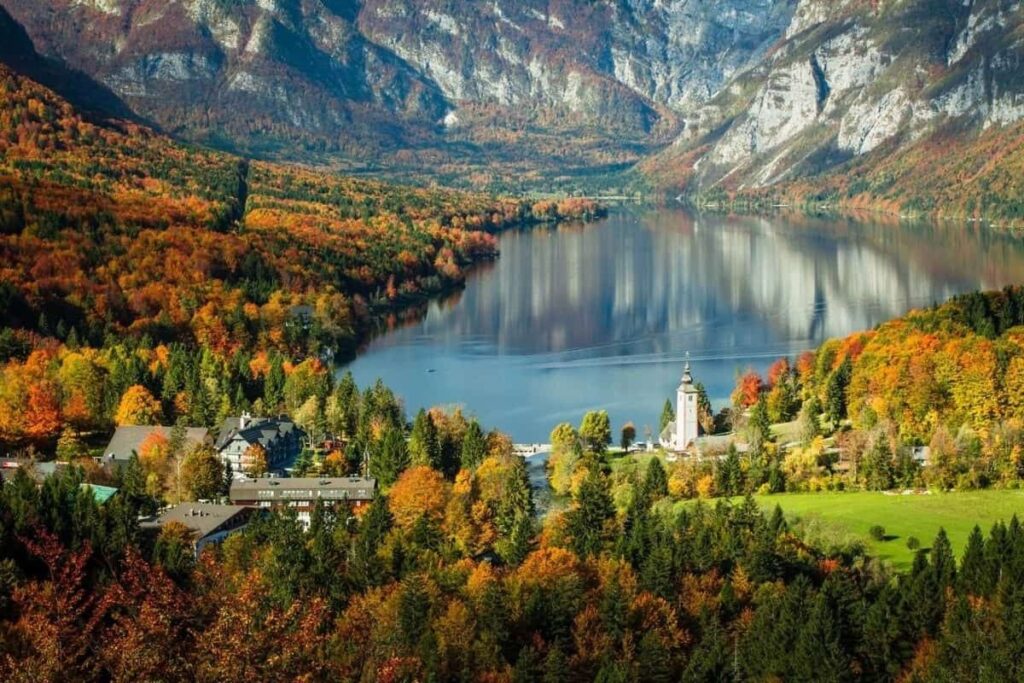
Tucked away in the heart of the Triglav National Park, Lake Bohinj is Slovenia’s largest and most pristine glacial lake. Far quieter and more tranquil than its famous neighbor Lake Bled, Bohinj offers visitors a genuine escape into nature’s untouched beauty. Surrounded by towering peaks, lush forests, and crystal-clear waters, it’s the perfect destination for those seeking peace, outdoor adventure, and authentic alpine charm.
🌟 Highlights of Lake Bohinj
🏞️ Pristine Natural Beauty
Lake Bohinj is known for its pure, turquoise waters framed by the dramatic peaks of the Julian Alps. The peaceful atmosphere makes it a favorite for visitors who want to disconnect from the hustle and bustle and reconnect with nature.
🚶♂️ Hiking and Outdoor Activities
With countless hiking trails starting right from the lakeshore, Bohinj is a paradise for hikers and outdoor enthusiasts. Popular routes include the scenic walk to Savica Waterfall, an iconic 78-meter cascade tucked into a lush forest, and more challenging climbs like the trek up Mount Vogel for panoramic lake views.
🚣♀️ Water Sports and Swimming
In summer, the lake’s refreshing waters invite swimming, kayaking, canoeing, and paddleboarding. Rental shops along the shore make it easy to get on the water and explore the lake at your own pace.
🚠 Vogel Cable Car
Take a ride up to Mount Vogel via cable car for stunning views over Lake Bohinj, the Julian Alps, and the surrounding valleys. At the top, enjoy hiking, paragliding, or simply soaking in the alpine scenery.
🏕️ Peaceful Village Life
The charming village of Ribčev Laz sits on the lake’s eastern shore and offers cozy guesthouses, traditional Slovenian restaurants, and a warm, welcoming atmosphere. It’s a great base for exploring the area or simply unwinding with lake views.
📍 How to Get to Lake Bohinj
- From Ljubljana: Approximately 1.5-hour drive or accessible by bus.
- From Lake Bled: A scenic 30-minute drive through Triglav National Park.
- By Air: Nearest major airport is Ljubljana Jože Pučnik Airport (LJU).
🕒 Visitor Information
- Best Time to Visit:
- Late spring to early autumn (May–September) for hiking, swimming, and outdoor activities.
- Winter is quieter, with opportunities for cross-country skiing and snowshoeing.
- Recommended Visit Duration:
- Plan at least a full day to explore the lake and nearby trails, though many visitors enjoy multi-day stays.
💡 Travel Tips
- 🥾 Bring sturdy hiking shoes for trails around the lake and waterfalls.
- 🧴 Pack sunscreen and insect repellent—the outdoors means sun and bugs!
- 📸 Capture early morning or late afternoon light for the most stunning photos.
- 🍽️ Try local specialties such as trout dishes in lakeside restaurants.
- 🌿 Respect the natural environment to keep this paradise pristine for generations to come.
Lake Bohinj is a serene, less-touristy alternative to Lake Bled, offering raw alpine beauty and endless opportunities for outdoor fun. Whether you’re hiking through lush forests, paddling across crystal-clear waters, or simply soaking in the tranquility, Bohinj invites you to slow down and savor the true essence of Slovenia’s great outdoors.
Postojna Cave & Predjama Castle

Nestled in the heart of Slovenia’s Karst region, Postojna Cave and Predjama Castle offer a magical glimpse into the country’s rich natural beauty and dramatic history. These two iconic sites are perfect for travelers seeking adventure, mystery, and a taste of medieval legend—all within easy reach of each other.
Whether you’re marveling at the stunning cave formations or exploring a cliffside castle straight out of a fairy tale, this combo promises an unforgettable day trip.
🕳️ Postojna Cave – The Underground Wonderland
🦇 The Cave Experience
Postojna Cave is one of the largest and most visited karst cave systems in the world, stretching over 24 kilometers underground. The highlight is a spectacular 5.3 km visitor route featuring vast caverns, towering stalactites and stalagmites, and underground halls illuminated to showcase their natural beauty.
🚂 Unique Cave Train
One of the most thrilling parts of the tour is the electric cave train that takes you deep into the cave before you explore on foot. It’s a fun, family-friendly way to journey through this mystical subterranean world.
🌟 The Proteus – “Human Fish”
Postojna is home to the rare olm or “human fish,” a blind amphibian that lives only in these caves. You might catch a glimpse of this fascinating creature during your visit!
🕒 Practical Info
- Guided tours last about 1.5 hours.
- The cave maintains a steady temperature around 10°C (50°F), so dress accordingly.
🏰 Predjama Castle – The Cliffside Fortress
🏞️ A Castle Like No Other
Just 9 km from Postojna Cave, Predjama Castle is one of the world’s most remarkable castles, famously built into a 123-meter-high cave mouth. Its dramatic location and medieval architecture make it look like something straight from a fantasy novel.
🗡️ Legendary History
The castle’s most famous story is that of Erasmus of Lueg, a knight who used the castle’s secret tunnels to withstand a lengthy siege in the 15th century. The castle’s hidden passages and defensive design add an air of mystery and adventure.
🖼️ Museum & Exhibits
Explore well-preserved interiors, armory displays, and exhibitions about life in medieval Slovenia. The castle also hosts events and medieval reenactments during the warmer months.
🕒 Practical Info
- Plan for about 1 to 1.5 hours to explore.
- Wear sturdy shoes, as some paths are uneven.
🚗 Getting There
- Postojna Cave and Predjama Castle are about a 45-minute drive from Ljubljana, making them an easy day trip.
- Regular shuttle services and guided tours connect the two sites.
- Parking is available at both locations.
💡 Travel Tips
- Buy combined tickets to save money and time.
- Visit early in the day to avoid crowds, especially in summer.
- Bring a light jacket or sweater for the cave’s cool temperature.
- Check the castle’s schedule for special events or tours.
- Combine your visit with a stop at nearby Škocjan Caves or Lake Cerknica for a full Karst region experience.
Together, Postojna Cave and Predjama Castle offer a rare blend of natural wonder and human history, inviting you to explore underground marvels and medieval legends all in one unforgettable day. From the eerie silence of the cave to the imposing cliffside fortress, these sites capture the magic and mystery of Slovenia’s Karst landscape perfectly.
Piran
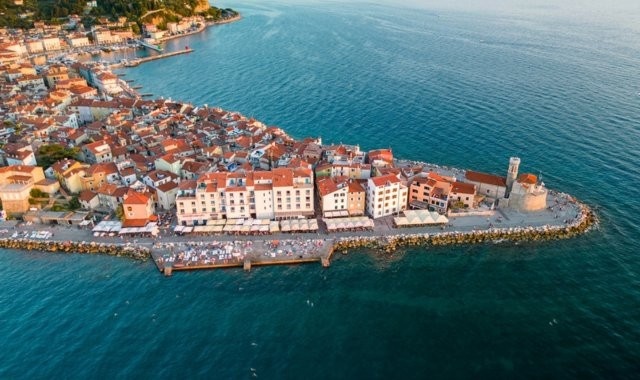
Perched on a stunning peninsula along the Slovenian Adriatic Sea, Piran is a picturesque coastal town rich in history, culture, and Mediterranean charm. Known for its narrow cobbled streets, colorful buildings, and vibrant harbor, Piran offers visitors a delightful blend of seaside relaxation and old-world beauty. Whether you’re strolling the historic squares, savoring fresh seafood by the water, or soaking in breathtaking sunsets, Piran is a must-visit destination on Slovenia’s small but stunning coastline.
🌟 Highlights of Piran
🏛️ Tartini Square
The heart of Piran is Tartini Square, named after the famous violinist and composer Giuseppe Tartini who was born here. Surrounded by pastel-colored Venetian-style buildings and lively cafés, this square buzzes with energy and charm. The impressive Tartini Monument stands proudly in the center, perfect for photos or simply people-watching.
🕍 St. George’s Parish Church
Dominating the skyline, St. George’s Church sits atop a hill overlooking the town and sea. Climb the bell tower for panoramic views of Piran’s rooftops, the Adriatic, and nearby salt pans. The church itself is a beautiful example of Baroque architecture and contains fascinating art and relics.
🚶♂️ Winding Streets & Medieval Walls
Lose yourself wandering through Piran’s labyrinth of narrow alleys, each corner revealing hidden squares, quaint shops, and cozy tavernas. Don’t miss a walk along the ancient city walls for spectacular views and a glimpse into Piran’s medieval past.
🍽️ Seafood & Mediterranean Cuisine
Fresh seafood is the star of Piran’s culinary scene. Enjoy local specialties such as grilled fish, calamari, and buzara (shellfish stew) at seaside restaurants. Pair your meal with Slovenian wines or a refreshing glass of local Teran.
🌊 Beaches & Waterfront Promenade
While Piran’s coast is mostly rocky, there are small beaches and sunbathing spots along the waterfront promenade. The clear waters invite swimming and snorkeling during warmer months.
📍 How to Get to Piran
- From Ljubljana: Approximately 1.5 to 2 hours by car or bus via the scenic Slovenian countryside.
- From Portorož: Just a short 10-minute drive or pleasant 30-minute walk along the coast.
- By Sea: Accessible by boat from nearby coastal towns and marinas.
🕒 Visitor Information
- Best Time to Visit:
- Late spring to early autumn (May–September) offers the best weather for beach time and outdoor exploration.
- Off-season visits provide a quieter, more intimate experience with fewer tourists.
- Recommended Visit Duration:
- A half-day to full day allows you to soak in the main sights, stroll the streets, and enjoy a meal by the sea.
💡 Travel Tips
- 👟 Wear comfortable shoes for cobblestone streets and uphill climbs.
- 📷 Catch the sunset from the city walls or harbor for unforgettable views.
- 🧴 Bring sunscreen and water during warmer months.
- 🍦 Try local gelato from one of the charming cafés around Tartini Square.
- 🚗 Parking can be limited, so consider arriving early or using nearby parking lots outside the old town.
With its Venetian flair, stunning seaside views, and welcoming atmosphere, Piran offers an unforgettable coastal escape in Slovenia. It’s a perfect spot to immerse yourself in history, enjoy Mediterranean flavors, and unwind by the shimmering Adriatic waters. Whether you’re exploring ancient streets or watching the sunset paint the sky, Piran promises memories that will last a lifetime.
Soča Valley
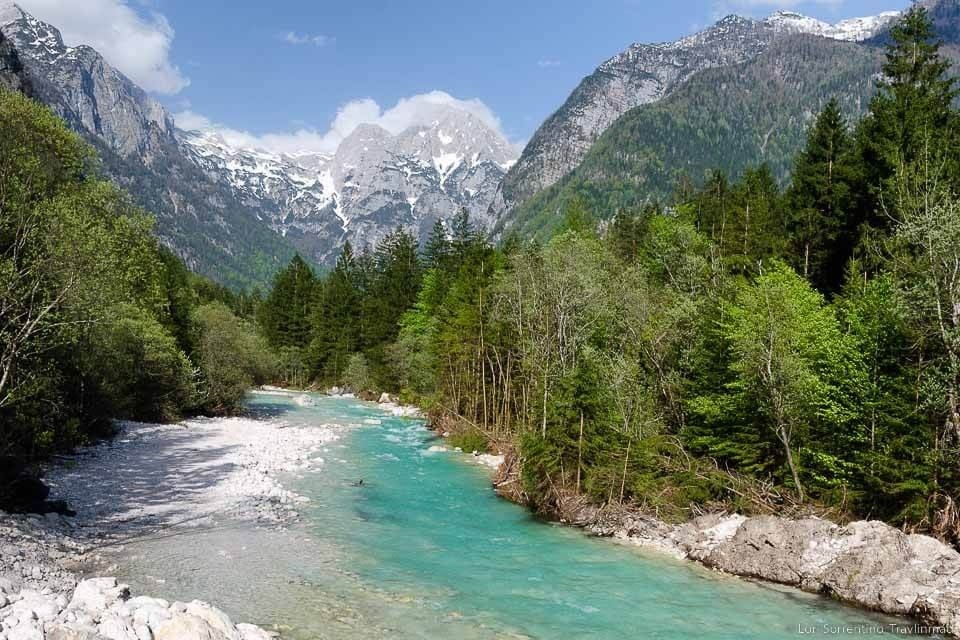
Nestled in the Julian Alps of northwestern Slovenia, the Soča Valley is a breathtaking destination famed for its turquoise river, lush green landscapes, and thrilling outdoor activities. Whether you crave peaceful hiking trails, adrenaline-pumping water sports, or rich World War I history, the Soča Valley delivers a diverse and unforgettable experience.
Often called the “Emerald Beauty,” the valley offers a perfect mix of nature, culture, and adventure—ideal for travelers looking to connect deeply with Slovenia’s wild heart.
🌟 Highlights of Soča Valley
💧 The Soča River
The shimmering emerald waters of the Soča River are the valley’s defining feature. Renowned for its crystal-clear beauty and striking color, the river invites visitors to kayak, raft, or simply relax by its pristine banks. It’s also a hotspot for fly fishing and swimming in summer.
🏞️ Hiking and Nature Trails
The valley boasts some of Slovenia’s best hiking routes, including paths through the Trenta Valley, Tolmin Gorge, and up to panoramic viewpoints like Mt. Krn and Mala Mojstrovka. The landscape is a kaleidoscope of waterfalls, alpine meadows, and dense forests.
🧗♂️ Adventure Sports
For thrill-seekers, the Soča Valley is an adrenaline playground. Try white-water rafting, canyoning, zip-lining, or paragliding, all surrounded by jaw-dropping mountain scenery. The valley hosts international adventure races and events every year.
🏰 Historical Sites
The Soča Valley is steeped in history, especially from World War I’s Isonzo Front, where fierce battles were fought. Explore open-air museums, war memorials, and historic trails that tell stories of courage and sacrifice amid stunning landscapes.
🍽️ Local Cuisine & Culture
After a day outdoors, savor traditional Slovenian dishes like frika (potato and cheese skillet) or jota (sauerkraut and bean stew) at cozy mountain huts and village inns. Friendly locals welcome visitors with authentic hospitality and vibrant folk traditions.
🚗 Getting There & Around
- The Soča Valley is about a 2-hour drive northwest of Ljubljana, accessible by car or organized tours.
- The valley is best explored by car or bike to reach its scattered villages and trailheads.
- Public transport options are limited but available during summer.
🕒 Best Time to Visit
- Late spring to early autumn (May–September) is the prime time for hiking, rafting, and sightseeing.
- Summer months offer warm weather and vibrant festivals.
- Autumn colors paint the valley beautifully, while winter offers quiet snowy landscapes for cross-country skiing nearby.
💡 Travel Tips
- Pack sturdy hiking shoes and layers for changing mountain weather.
- Bring a swimsuit for river swimming and water activities.
- Book adventure tours in advance during peak season.
- Respect nature—stay on marked trails and follow local guidelines.
- Visit the nearby Kobarid Museum for an insightful history lesson on the Isonzo Front.
The Soča Valley is more than just a pretty place—it’s an invitation to immerse yourself in Slovenia’s natural splendor and adventurous spirit. Whether you’re paddling down turquoise waters, trekking alpine trails, or reflecting on history’s echoes amid mountain peaks, the valley leaves an imprint on every traveler’s heart.
Triglav National Park
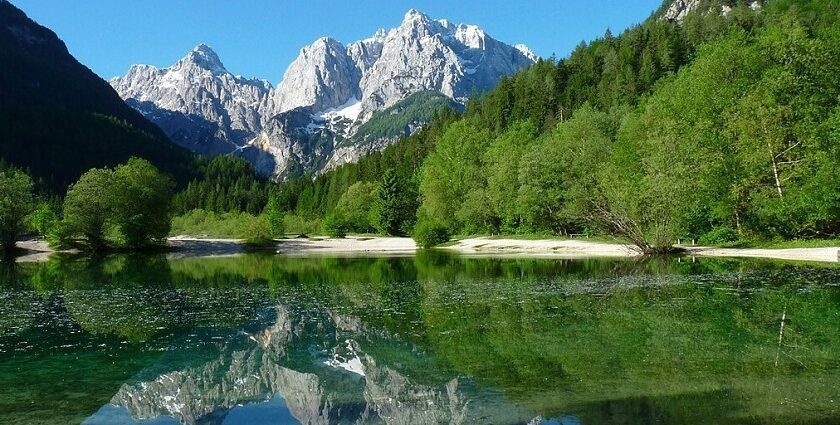
Nestled in the heart of the Julian Alps, Triglav National Park is Slovenia’s only national park and a true natural treasure. Named after Mount Triglav, the country’s highest peak and a national symbol, this vast park offers pristine landscapes of rugged mountains, crystal-clear rivers, lush forests, and serene alpine meadows. For nature lovers, hikers, and adventurers, Triglav National Park is the ultimate destination to experience Slovenia’s breathtaking outdoors.
🌟 Highlights of Triglav National Park
🏔️ Mount Triglav
Standing tall at 2,864 meters (9,396 feet), Mount Triglav is more than just a mountain—it’s a Slovenian icon and a rite of passage for many hikers. Climbing to its summit is a challenging but rewarding experience, offering panoramic views of the Alps and beyond. For those less inclined to summit, there are plenty of easier trails with stunning vistas.
💧 Soča River
Known as one of Europe’s most beautiful rivers, the Soča River dazzles visitors with its emerald-green waters and dramatic gorges. Popular activities include kayaking, rafting, and fishing, as well as peaceful riverside walks.
🌿 Alpine Meadows & Diverse Wildlife
The park is home to diverse flora and fauna, including rare plants and animals like chamois, ibex, and golden eagles. Explore wildflower-filled meadows, dense forests, and tranquil glacial lakes, perfect for wildlife spotting and photography.
🚶♀️ Extensive Hiking & Outdoor Adventures
With over 300 kilometers of marked trails, Triglav National Park is a hiker’s paradise. Trails range from gentle walks around lakes like Lake Bohinj to demanding multi-day treks across mountain passes. Other outdoor activities include cycling, canyoning, paragliding, and winter sports.
🏞️ Lakes & Waterfalls
Besides Lake Bohinj, the park boasts smaller alpine lakes such as Lake Krn and stunning waterfalls like Savica Falls, a must-see natural wonder cascading 78 meters into a turquoise pool.
📍 How to Get to Triglav National Park
- From Ljubljana: About 1.5 to 2 hours by car or bus.
- From Lake Bled or Bohinj: Both serve as popular gateways to the park.
- By Public Transport: Regional buses connect major towns with trailheads and visitor centers.
🕒 Visitor Information
- Best Time to Visit:
- Late spring to early autumn (May–September) is ideal for hiking and outdoor activities.
- Winter offers opportunities for skiing and snowshoeing, though many trails are inaccessible.
- Recommended Visit Duration:
- Spend at least 2 to 3 days to explore the diverse landscapes and activities comfortably.
💡 Travel Tips
- 🥾 Wear sturdy hiking boots and dress in layers; mountain weather can change quickly.
- 🥤 Carry plenty of water and snacks for longer hikes.
- 📸 Bring a camera to capture the park’s stunning vistas and wildlife.
- 🏕️ Consider staying in mountain huts or local guesthouses for an authentic alpine experience.
- 🐾 Respect the natural environment and stay on marked trails to protect fragile ecosystems.
Triglav National Park is a breathtaking blend of rugged wilderness, serene beauty, and cultural heritage. Whether you’re scaling Slovenia’s highest peak, paddling down the emerald Soča River, or simply soaking in alpine tranquility, this park offers a deeply rewarding escape into nature. It’s a must-visit for anyone wanting to experience the pure heart of Slovenia’s outdoors.
Maribor
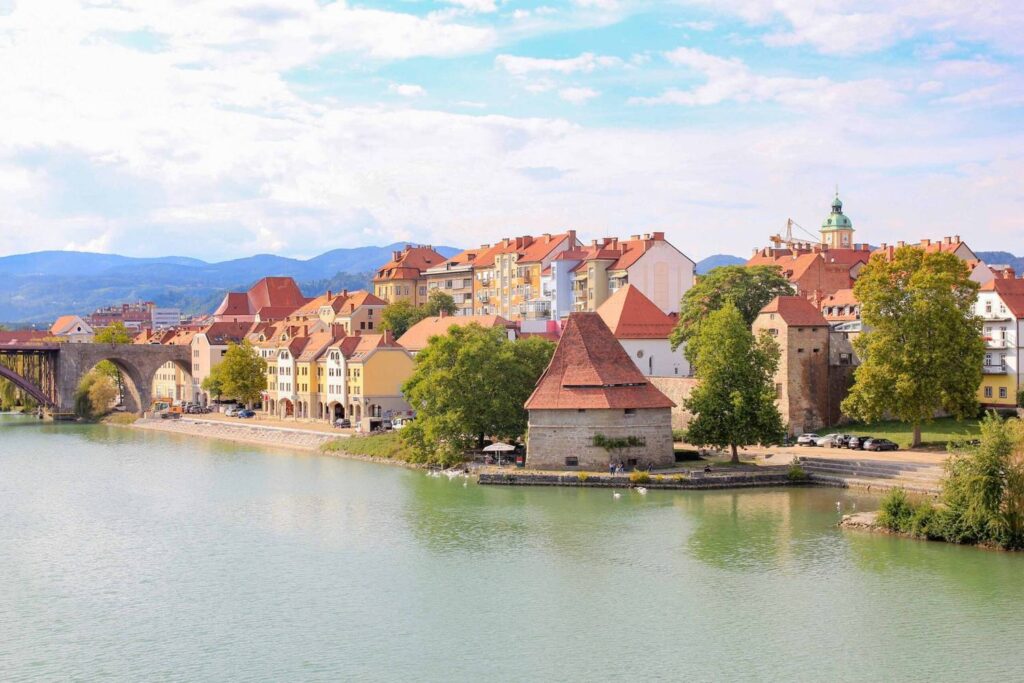
Nestled along the banks of the Drava River in northeastern Slovenia, Maribor is a lively city blending rich history, vibrant culture, and stunning natural beauty. Known as the country’s wine capital, Maribor offers visitors a delightful mix of medieval charm, modern art, and outdoor adventures.
Whether you’re wandering its cobblestone streets, sampling world-famous wines, or skiing nearby in winter, Maribor is a year-round destination that charms travelers with its welcoming spirit and authentic Slovenian vibe.
🌿 Highlights of Maribor
🍇 The Old Vine & Lent District
Maribor proudly hosts the world’s oldest living grapevine, over 400 years old, growing right in the city center’s Lent District. This historic area along the Drava River is a lively spot filled with cafés, festivals, and beautiful river views.
🏰 Maribor Castle
Dating back to the 15th century, Maribor Castle houses the Regional Museum with exhibits on the city’s history, art, and culture. The castle’s Renaissance architecture and tranquil courtyard offer a peaceful retreat in the heart of the city.
🌳 Pohorje Hills
Just a short trip from Maribor, the Pohorje Hills provide fantastic hiking and mountain biking trails in summer and excellent skiing and snowboarding in winter. The lush forests and panoramic views make it a nature lover’s paradise.
🎭 Maribor Festival & Culture
Maribor boasts a thriving cultural scene, with the annual Maribor Festival showcasing music, theatre, and dance performances. The city’s theaters, galleries, and live music venues keep the arts alive year-round.
🍽️ Local Cuisine & Wine
Indulge in traditional Styrian dishes like štruklji (rolled dumplings) and koroška klobasa (Carinthian sausage) paired with locally produced wines. Maribor’s wine routes invite visitors to explore nearby vineyards and cellars.
🚗 Getting There & Around
- Maribor is about a 1.5-hour drive northeast of Ljubljana and well connected by train and bus.
- The city center is compact and best explored on foot or by bike.
- Rental cars or guided tours are great options for exploring the surrounding wine region and Pohorje Hills.
🕒 Best Time to Visit
- Spring and summer (April–September) are ideal for outdoor activities and festivals.
- Autumn is perfect for wine harvest events and colorful landscapes.
- Winter attracts skiers and winter sports enthusiasts to Pohorje.
💡 Travel Tips
- Don’t miss tasting the legendary Old Vine wine during your visit.
- Visit the Lent Festival in June for a lively atmosphere full of music and local traditions.
- Take a cable car ride up to Pohorje for stunning views.
- Explore Maribor’s charming streets early in the morning to enjoy a peaceful stroll.
Maribor is a city where history, culture, and nature meet effortlessly. Whether you’re sipping wine by the river, exploring medieval landmarks, or hitting the slopes in winter, Maribor invites you to discover authentic Slovenian warmth and hospitality at every turn.
Škocjan Caves
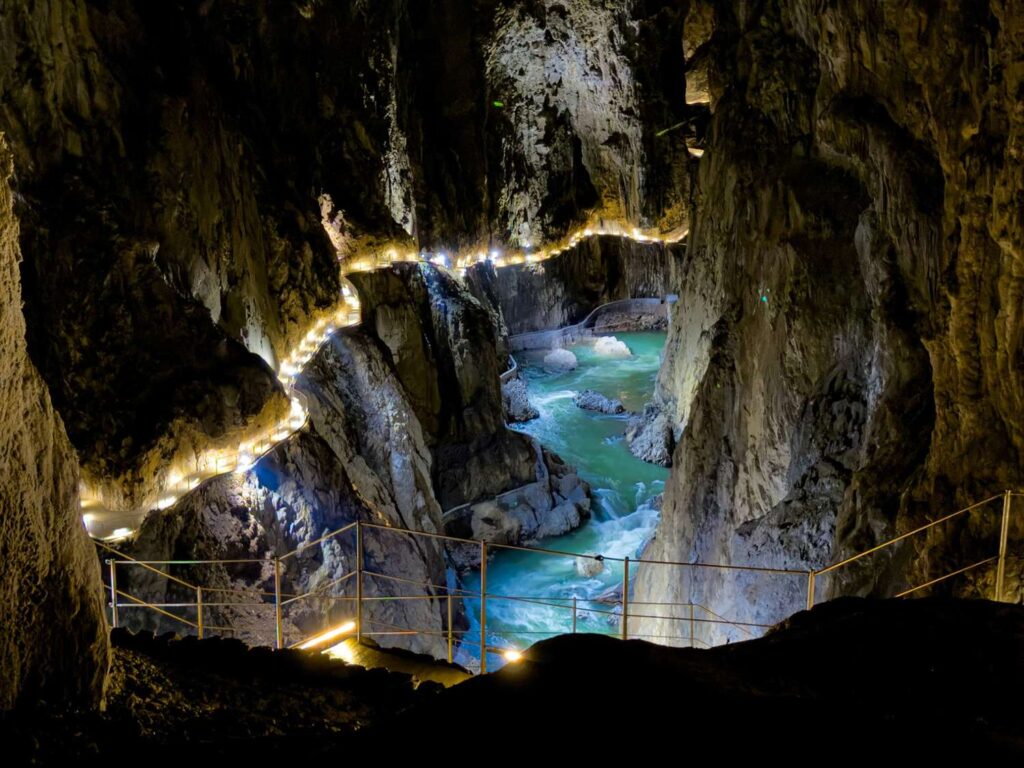
Hidden beneath the rolling hills of southwestern Slovenia lies the breathtaking Škocjan Caves, one of the world’s largest and most impressive karst cave systems. Known for its massive caverns, roaring underground river, and spectacular natural formations, Škocjan Caves offer visitors an unforgettable journey into the heart of the earth. Recognized as a UNESCO World Heritage Site, this natural wonder is a must-see destination for adventurers, nature lovers, and geology enthusiasts alike.
🌟 Highlights of Škocjan Caves
🌊 Underground River & Dramatic Caverns
The star attraction is the Reka River, which plunges into the caves creating one of the largest underground canyons in the world. The river’s powerful flow echoes through the vast chambers, including the awe-inspiring Big Collapse Dolina, a natural skylight formed when the cave roof collapsed, flooding the space with light and adding to the mystical atmosphere.
🕸️ Stunning Stalactites and Stalagmites
Inside the caves, visitors can marvel at countless limestone formations sculpted over millions of years. Delicate stalactites hang like chandeliers while stalagmites rise from the floor, forming otherworldly shapes that inspire wonder and curiosity.
🚶♂️ Guided Tours & Adventure Trails
Exploring Škocjan Caves is best done with a knowledgeable guide who shares fascinating insights about the geology, history, and ecology of the area. Guided tours range from easy walks suitable for families to more adventurous routes that include climbing and crawling through narrow passages.
🌿 Rich Ecosystem
Beyond the caves themselves, the surrounding Škocjan Regional Park is home to diverse flora and fauna. The unique microclimate inside the caves supports rare cave-dwelling species, while the park’s forests and meadows offer hiking trails and peaceful nature walks.
📍 How to Get to Škocjan Caves
- From Ljubljana: Approximately 1.5-hour drive or accessible by bus.
- From Trieste, Italy: Roughly a 45-minute drive, making it a great day trip from nearby Italian cities.
- By Public Transport: Regional buses connect Škocjan with nearby towns such as Divača.
🕒 Visitor Information
- Best Time to Visit:
- The caves are open year-round, with guided tours operating throughout the day. Spring through autumn is ideal for combining the cave visit with outdoor activities in the surrounding park.
- Recommended Visit Duration:
- Expect to spend about 2 to 3 hours exploring the caves and visitor center.
💡 Travel Tips
- 🧥 Bring a light jacket or sweater; cave temperatures stay around 10-12°C (50-54°F) year-round.
- 👟 Wear comfortable, sturdy shoes with good grip for walking on uneven and sometimes slippery surfaces.
- 📸 Photography is allowed but without flash to protect the delicate cave environment.
- 🐾 Not recommended for people with mobility issues due to stairs and narrow passages.
- 🌳 Combine your visit with hiking or picnicking in Škocjan Regional Park for a full day of adventure.
The Škocjan Caves offer a rare glimpse into one of nature’s most extraordinary underground landscapes. From the thunderous river to the delicate rock formations and rich biodiversity, this UNESCO World Heritage Site captivates visitors with its mystery and magnificence. Whether you’re a nature enthusiast, history buff, or simply seeking a unique adventure, Škocjan Caves promise an unforgettable experience deep beneath Slovenia’s surface.
Kranjska Gora
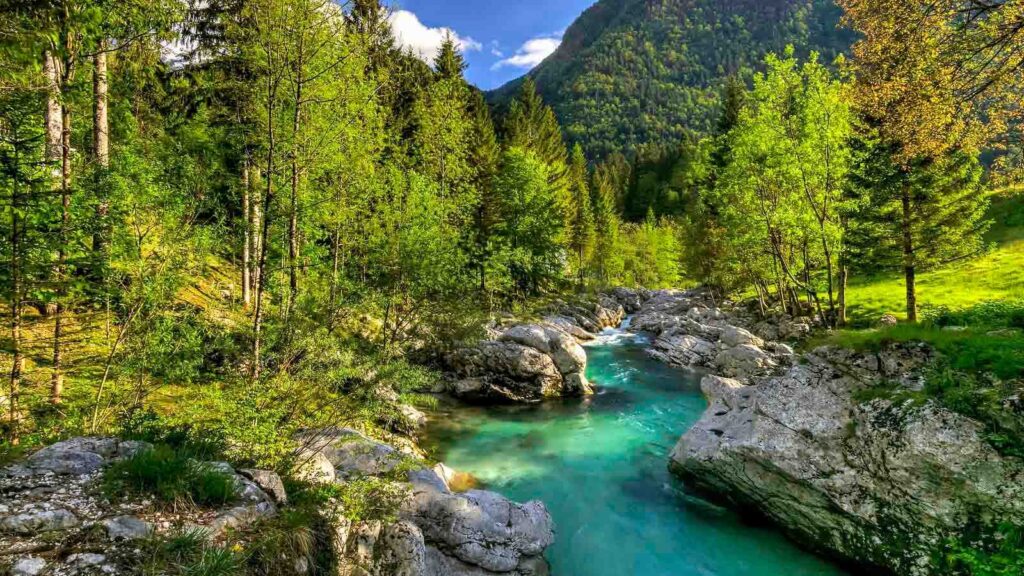
Nestled in the stunning Julian Alps near Slovenia’s border with Austria and Italy, Kranjska Gora is a charming mountain town known for its breathtaking scenery, world-class skiing, and year-round outdoor adventures. Whether you’re seeking winter snow sports, summer hiking, or simply a peaceful alpine escape, Kranjska Gora offers something special for every traveler.
With its cozy alpine atmosphere and easy access to nature, this picturesque town is a must-visit destination for families, adventure seekers, and nature lovers alike.
🌟 Highlights of Kranjska Gora
❄️ Winter Wonderland
Kranjska Gora is famed for its ski resorts and winter sports facilities. The well-groomed slopes cater to beginners and experts alike, while cross-country skiing, snowboarding, and sledding add to the snowy fun. The annual Vitranc Cup ski competition attracts world-class athletes and fans every winter.
🥾 Summer Hiking & Biking
When the snow melts, Kranjska Gora transforms into a hiking and biking haven. Trails like the Lake Jasna Loop and the scenic route to Planica Nordic Center offer spectacular views of alpine meadows, forests, and rugged peaks.
💦 Lake Jasna
Just outside town, Lake Jasna is a picture-perfect spot with crystal-clear waters surrounded by mountains. It’s perfect for a leisurely stroll, picnic, or even a refreshing dip in summer.
🏞️ Triglav National Park Gateway
Kranjska Gora serves as a gateway to Triglav National Park, Slovenia’s only national park and home to the majestic Mount Triglav. It’s ideal for day trips, nature exploration, and experiencing Slovenia’s pristine wilderness.
🛍️ Charming Alpine Village
The town itself offers cozy cafés, shops, and traditional Slovenian restaurants serving hearty alpine cuisine. Don’t miss trying local specialties like štruklji and žganci.
🚗 Getting There & Around
- Kranjska Gora is about a 1.5-hour drive northwest of Ljubljana.
- The town is compact and easily walkable, with bike rentals available for exploring nearby trails.
- Public buses connect Kranjska Gora to larger Slovenian cities, but a car is recommended for flexibility.
🕒 Best Time to Visit
- Winter (December to March) is peak season for skiing and snow sports.
- Summer (June to September) offers ideal weather for hiking, biking, and lake activities.
- Shoulder seasons provide quieter experiences and beautiful scenery.
💡 Travel Tips
- Book ski equipment and lessons in advance during winter.
- Pack layered clothing to adapt to changing mountain weather.
- Explore nearby attractions like the Planica Nordic Center and the quaint village of Rateče.
- Enjoy local festivals, such as the Kranjska Gora Jazz Festival in summer.
Whether blanketed in snow or basking in summer sunshine, Kranjska Gora is a jewel in Slovenia’s alpine crown. Its stunning landscapes, outdoor activities, and warm hospitality make it an unforgettable destination for travelers seeking both adventure and relaxation in nature’s embrace.
📝 Local Travel Tips
- 🚆 Get the Slovenia Rail Pass: Great value if you’re traveling between major cities and towns by train.
- 🍽️ Try traditional dishes: Sample štruklji (rolled dumplings), jota (sauerkraut stew), and potica (walnut cake).
- 🎟️ Book cave tours in advance: Especially Postojna and Škocjan during peak season.
- 🧳 Pack layers: Weather can shift between mountains and valleys even in summer.
- 🚗 Rent a car for flexibility: Some of Slovenia’s best spots, like remote gorges and villages, are easier to reach by car.
📌 Additional Information
- Safety: Slovenia is one of Europe’s safest destinations — solo and family travelers feel welcome.
- Connectivity: Free Wi-Fi is common in cities and tourist hubs; local SIMs are affordable.
- Shopping: Pick up local honey, handcrafted lace, pumpkin seed oil, and Slovenian wine as souvenirs.
- Eco-Friendly Travel: Slovenia is known for sustainability — bring reusable bottles and avoid single-use plastics.
✨ Final Thoughts
Slovenia might be small in size, but it’s massive in beauty and charm. Whether you’re rowing across Lake Bled, sipping wine in Maribor, or hiking in Triglav, every corner of this country feels like a well-kept secret. With a warm heart, green soul, and peaceful pace — Slovenia is a destination that invites you to slow down, breathe in, and fall in love.
Ready to uncover one of Europe’s best-kept secrets? Slovenia is calling. 🇸🇮💚🌲
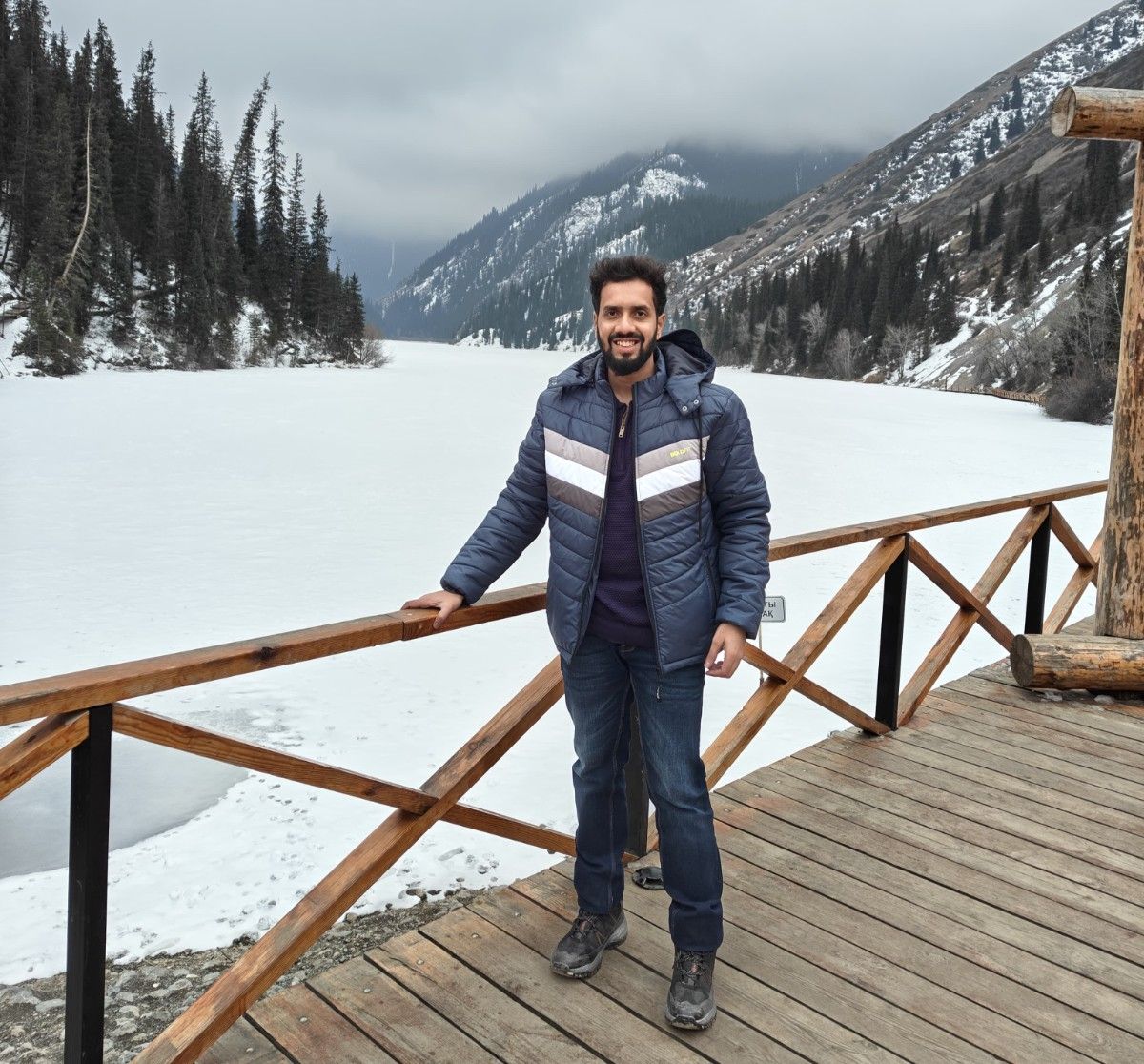
I’m Shreyash Mhashilkar — a full-stack developer by profession, and a passionate explorer of the future at heart.
With a strong foundation in both front-end and back-end , I spend my days building websites and applications that are not just functional, but scalable, intuitive, and user-focused.

